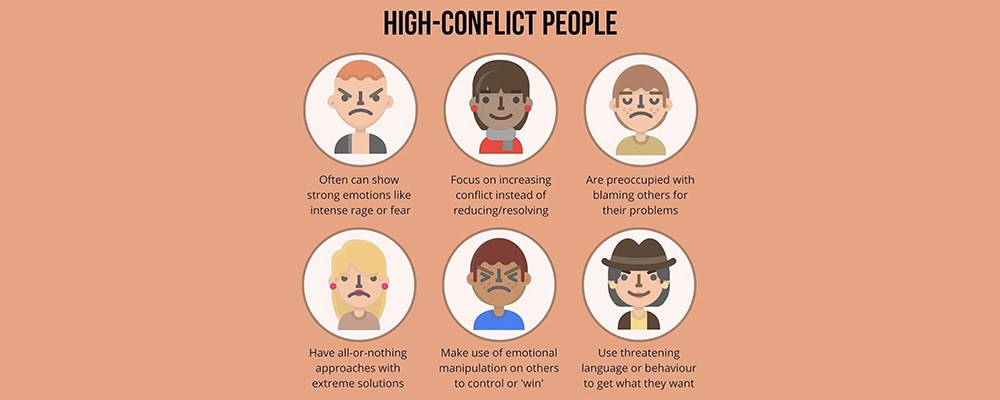Psychologist and Rational Emotive Behavioural Therapist
sanarubiana@gmail.com, IG @Sanarubiyana15, Twitter @SRubiyana
High-conflict people are those who tend to exhibit behaviour patterns that can escalate conflicts and difficulties in interpersonal relationships.

What are some characteristics they display?
- High-conflict people struggle with emotional empathy.
- Are preoccupied with blaming others.
- Negative emotions often dominate their thinking.
- Struggle to accept or heal from losing control of their narrative or relationship.
- Having rigid, uncompromising relating styles worsens the problem rather than solves it .
- Struggle to reflect on their behaviour and learn from it.
- Refuse to take responsibility for their behaviour and the problems they create.
Childhood emotional neglect or abuse can leave us struggling to deal with reality, ending up fighting instead of dealing with problems. High-conflict people argue against feedback, regardless of how helpful and truthful it may be and try to persuade others to agree with their rigid point of view and to help them attack their targets of blame. The issues come and go, but their personality structure conflicts with them. Their problems remain unresolved, and the stress on those around them often increases.
- It’s important to identify when you’re dealing with a person who struggles with this so that you do not enable self-sacrifice or doubt yourself.
- When we are the ones struggling with this, we might benefit from going inwards (within a safe attachment) and learning how to process our emotions and disappointments and deal with consequences.
We can process the losses and enjoy what we learn from the consequences; we are worth growing rather than getting stuck.
- Avoid escalation of conflict- Pay full attention and respect to the HCP’s concerns, and show empathy where you can – even if this means doing the opposite of what you feel; this is a critical step in reducing the HCP’s fear response and reducing their defensiveness. Note, however, that while engaging in this conversation, it is important to avoid believing, agreeing, or volunteering to fix things, remain at arms’ length, and limit the time spent in discussions.
- Respond early to misinformation and angry communications- Provide a brief, informative, balanced, firm response to the HCP using the same medium they used. If misinformation has been sent to third parties, provide accurate information to them and anyone else caught up in the conflict.
- Set limits on behaviour—Respond to aggressive, defensive behaviour assertively but respectfully to allow the HCP to save face and reduce the conflict—even if your instinctive response is retaliation or avoidance. Focus on external reasons for requiring better behaviour (e.g., laws and policies) and explain the consequences for non-compliance. Also, set clear boundaries for future contact.
- Choose when and how to respond. Ensure you address issues with the HCP afterthought, not as an immediate emotional response. Don’t try to ‘out-conflict’ an HCP (e.g., by jumping to conclusions or reacting emotionally); be ready to disengage at any time. It can also be helpful to change the subject and to focus on the future.


0 Comments